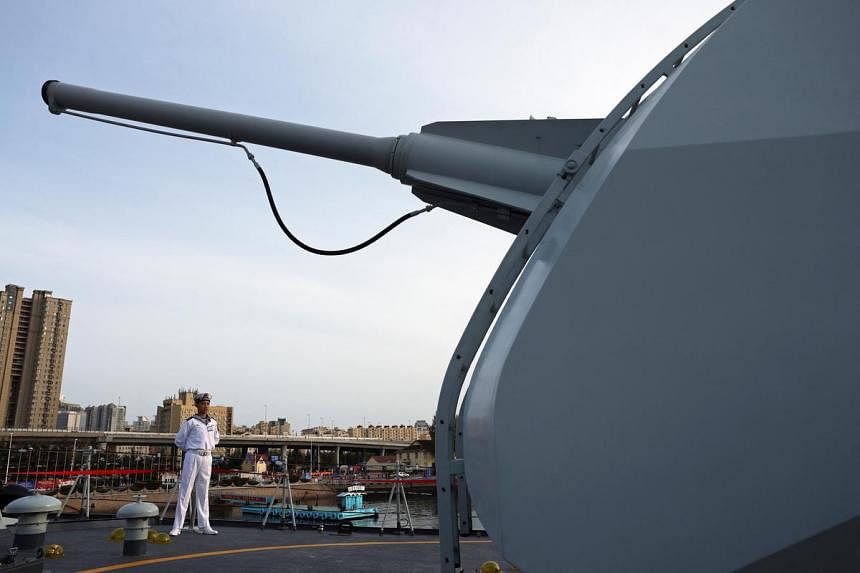QINGDAO – The Chinese Navy on April 21 kicked off a biennial meeting of top foreign naval officials in the port city of Qingdao, in a show of military diplomacy that will be closely watched for signs of more engagement between China and the United States.
The four-day event with delegations from 30 countries comes during heightened tensions in the South China Sea, as US treaty ally Manila is in an increasingly fraught stand-off with Beijing over the strategic waterway, which could be a potential flashpoint for US-China relations.
Participants will hold closed-door talks on April 22, with seminars on topics such as addressing maritime security challenges. They will also discuss the Code for Unplanned Encounters at Sea, a set of guidelines formulated a decade ago, meant to de-escalate tensions between militaries at sea. It has not since been updated to cover drone warfare.
A January preliminary meeting discussed the creation of a working group to prevent drone collisions at sea, state media reported.
The event overlaps with annual US-Philippines large-scale joint military drills beginning on April 22, which will occur outside Philippine territorial waters for the first time.
Tensions are particularly high around Second Thomas Shoal in the South China Sea, where Manila has accused Beijing of “harassment”, including the use of water cannon against Philippine vessels.
The US, Japan and the Philippines signed a cooperation agreement at a trilateral summit last week, where leaders expressed concerns over China’s “dangerous and aggressive behaviour” in the South China Sea, which Beijing slammed as “bloc politics”.
“The US-Philippines joint drills this time cover a bigger region, involve more troops and include exercises out of its original defensive scope, such as anti-submarine and anti-missile drills,” said military expert Cao Weidong, a former researcher at the People’s Liberation Army (PLA) Naval Military Studies Research Institute in China.
“It is not an issue when the US carries out defensive drills with the Philippines, but when these drills become offensive in nature and pose a threat to neighbouring countries, we must not only be on high alert but also respond.”
However, Washington and Beijing resumed top-level military contact on April 16, with Defence Secretary Lloyd Austin speaking to his Chinese counterpart for the first time in almost two years as both countries sought to restore military ties. In April, US and Chinese military officials met in Hawaii.
China is hosting the multilateral meeting for the first time since 2014, and 2024’s event coincides with the 75th anniversary of the PLA Navy on April 23.
Beijing aims to expand its ocean-going fleet, which some analysts predict will become the world’s biggest by 2035. President Xi Jinping has repeatedly called for a “world-class” military to be established by 2027, the 100th anniversary of the PLA’s founding.
China has yet to launch sea trials for its next aircraft carrier, the Fujian, a key step towards expanding its maritime presence in the Indo-Pacific, as the US and its allies step up naval operations in the region.
China is involved in maritime or territorial disputes with other attending countries, including Japan. Beijing and Tokyo have accused each other of maritime incursions after a December coast guard confrontation near disputed islands in the East China Sea.
In November, Australia accused China of injuring navy divers using sonar pulses from a Chinese warship.
During the Qingdao meeting, the navy has opened several active Chinese warships docked in Qingdao for public visits, including the Guiyang and Shijiazhuang missile destroyers. On a recent guided tour, Reuters journalists saw weapons systems and rescue equipment. Children excitedly posed for photos with missile launchers.
The symposium was last held in Japan in November 2022, where officials from Japan, South Korea and the US met on the sidelines to discuss security challenges in the Indo-Pacific region, including those from North Korea. REUTERS

